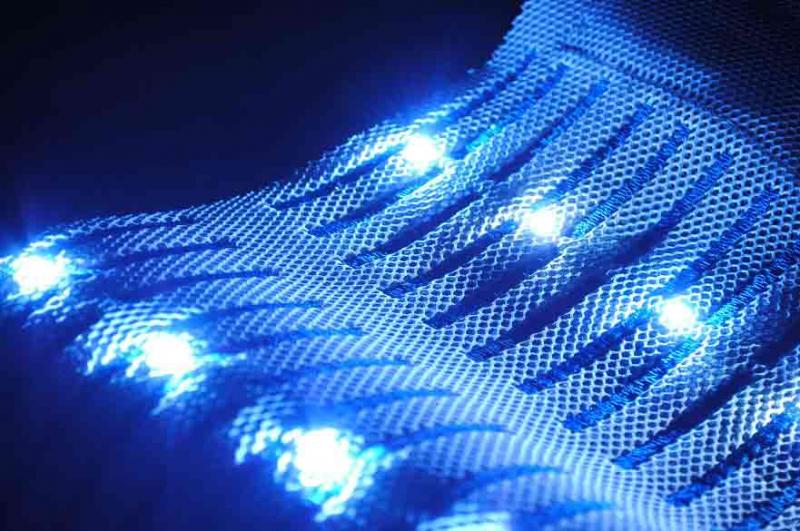 The opportunity for embedded and AI-enabled sensors in smart clothing. The growth of the sensor market has created an opportunity for more focus on smart clothing, which has been around a long time, including for use in dementia care, but may have its greatest utility ahead. Researchers are beginning to notice the potential in the care of older adults, including the assertion that "Smart clothing is more natural to wear compared to the other wearables and covers a wider area for monitoring." Here are five examples of sensor-enabled smart clothing:
The opportunity for embedded and AI-enabled sensors in smart clothing. The growth of the sensor market has created an opportunity for more focus on smart clothing, which has been around a long time, including for use in dementia care, but may have its greatest utility ahead. Researchers are beginning to notice the potential in the care of older adults, including the assertion that "Smart clothing is more natural to wear compared to the other wearables and covers a wider area for monitoring." Here are five examples of sensor-enabled smart clothing:
HexoSkin. "Vital signs sensors traditionally used for cardiac and respiratory monitoring involve adhesives or tape to keep the sensors in place on the skin. Experience has shown there's a tradeoff between monitoring duration (1 to 14 days), and adhesive aggressiveness, which can lead to skin rashes or wounds. There's now a safer and more convenient way for patients to record long-term vital signs data needed for diagnosis or to guide care or rehabilitation: smart textiles. Hexoskin users have successfully demonstrated the advantages of using a form factor that patients like." Learn more.
Myant Health. "They developed smart underwear that could become one of the most reliable and effective ways to detect and prevent health issues. The underwear current includes biometric sensors that measure things like sleep quality, activity, stress level, temperature, and electrocardiography (ECG)*. As consumers wear the underwear, sensors in Myant’s SKIIN brand fabric send data back to a corresponding app. Myant’s platform analyzes the data, provides guidance on lifestyle changes, and allows users to share information with healthcare providers." Learn more.
Sensoria Health. "The intelligent Cam Boot monitors patient’s rehabilitation compliance to the clinician’s prescribed stabilization and mechanical offloading protocol. Easy to use application provides users with real-time feedback on adherence and compliance to physicians’ orders. Clinical dashboard provides adherence and compliance information. It also tracks the time the clinician spends on each patient per month to facilitate remote patient monitoring billing." Learn more.
Siren Care. "An injury-detecting sock could help people with diabetes prevent amputations. Early detection is critical in this process. Since skin inflammation is accompanied by a rise in temperature, studies show that home monitoring of foot skin temperature could significantly reduce skin ulcers. Based on these findings, Siren produced a sock that can measure foot temperature in real-time in six different locations. These spots were specifically selected because they are high points of pressure as well as being the most common sights of injury in people with diabetes." Learn more.
Elitac Wearables Balance Belt. "The BalanceBelt is a Class 1 Medical Device wearable that uses haptic feedback to help patients suffering from severe balance disorders find their balance and regain their independence. Patients suffering from severe balance disorders such as Bilateral Vestibular Loss (BVL) experience severe imbalance and difficulty walking. BVL affects an estimated 81 people out of every 100,000, which amounts to over 6 million people worldwide. By providing haptic feedback on the wearer’s body position and balance, the BalanceBelt helps BVL patients move around freely without relying on others, walking sticks or wheelchairs." Learn more.
[Note: See new report, just published: The Future of Sensors and Older Adults 2022]

 The opportunity for embedded and AI-enabled sensors in smart clothing. The growth of the sensor market has created an opportunity for more focus on smart clothing, which has been around a long time,
The opportunity for embedded and AI-enabled sensors in smart clothing. The growth of the sensor market has created an opportunity for more focus on smart clothing, which has been around a long time,
Comments
"Smart" underwear
My Apple Watch does most of "measure things like sleep quality, activity, stress level, temperature, and electrocardiography (ECG)" -- and I'm more willing to wear it close to 24/7 than I would be underwear. And I trust Apple's privacy protection more than Myant’s platform, after reading their privacy policy.